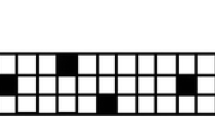Abstract
Hybrid optical two-dimensional (2D) codes due to their large cardinality and improved system performance for constant weight have recently been designed and studied for optical CDMA system. In this manuscript, an attempt has been made to analyze the performance of four different 2D codes from a communication point of view; that describe their use to support a system under certain conditions. These hybrid 2D codes employ (n, w, λa, λc) optical orthogonal coding for one dimension that is for time spreading and synchronized prime sequences (SPS), synchronized quadratic congruence sequences (SQC), prime code sequences (PC), and synchronized prime procession (SPP) for other dimension that is for wavelength hopping respectively. The distinguishing property amongst the four codes lies in their values of maximum auto- and cross- correlation function. It has been observed that with the constant value of weight, the code with the largest code length parameter has shown the best performance while the code with the least code length gives the poorest performance. Investigations reveal that SPS/OOC code performs better in comparison to other codes with constant weight and for different number of wavelengths and SQC/OOC results in poor performance due to lesser code length.



Similar content being viewed by others
REFERENCES
Prucnal, P R., Santoro, M.A., and Ting Rui Fan, Spread spectrum fibre-optic local area network using optical processing, J. Lightwave Technol., 1986, vol. 4, no. 5, pp. 547–554.
Salehi, J.A., Code division multiple access techniques in optical fibre networks—Part I: Fundamental principles, IEEE Trans. Commun., 1989, vol. 37, no. 8, pp. 824–833.
Mric, S.V., et al., A new family of optical code sequences for use in spread spectrum fibre-optic local area networks, IEEE Trans. Commun., 1993, vol. 41, no. 8, pp. 1217–1221.
Stok, A. and Sargent, E.H., The role of optical CDMA in access networks, IEEE Commun. Mag., 2017, vol. 40, no. 9, pp. 83–87.
Bin, L., One-coincidence sequences with specified distance between adjacent symbols of frequency hopping multiple access, IEEE Trans. Commun., 1997, vol. 45, no. 4, pp. 408–410.
Whitlock, B.K., et al., Modelling and simulation of the OETC optical bus, IEEE J. Sel. Areas Commun., 1997, vol. 15, no. 4, pp. 717–730.
Tancevski, L. and Andonovic, I., et al., Hybrid wavelength hoping/time spreading schemes for use in massive optical networks with increased security, J. Lightwave Technol., 1998, vol. 14, no. 12, pp. 2636–2647.
Yang, G.C. and Kwong, W.C., Prime Codes with Applications to CDMA Optical and Wireless Networks, Boston, MA: Artech House, 2002.
Gagliardi, R.M., Design and performance analysis of wavelength/time (W/T) matrix codes for optical CDMA, J. Lightwave Technol., 2015, vol. 21, no. 11, pp. 2524–2533.
Sun Shurong, A new family of 2D optical orthogonal codes for optical CDMA access networks, Asia Pacific Conference on Communications, Perth, 2005.
Kwong, W.C., Yang, G.-C., Baby, V., Bres, C.-S., and Prucnal, P.R., Multiple-wavelength optical orthogonal codes under prime-sequence permutations for optical CDMA, IEEE Trans. Commun., 2010, vol. 53, no. 1, pp. 117–123.
Shivaleela, E.S., Selvarajan, A., and Srinivas, T., Two-dimensional optical orthogonal codes for fibre-optic CDMA networks, J. Lightwave Technol., 2005, vol. 23, no. 2, pp. 647–654.
Yang, G.-C., Lin, Y.-C., Chang, C.-Y., and Kwong, W.C., Construction of optimal 2D optical codes using (n, w, 2, 2) optical orthogonal codes, IEEE Trans. Commun., 2014, vol. 59, no. 1, pp. 194–200.
Wanget, T.C., et al., A new family of 2D codes for fibre optic CDMA system with and without the chip synchronous assumption, J. Lightwave Technol., 2009, vol. 27, no. 14, pp. 2612–2620.
Salehi, J.A. and Mashhadi, S., Code-division multiple-access techniques in optical fibre networks—Part III: Optical and logic gate receiver structure with optical orthogonal codes, IEEE Trans. Commun., 2016, vol. 54, no. 8, pp. 1457–1468.
Author information
Authors and Affiliations
Corresponding author
About this article
Cite this article
Manisha Bharti Performance Analysis of Hybrid 2D Codes at Constant Weight Using (n, w, λa, λc) OOCs for OCDMA. Opt. Mem. Neural Networks 28, 135–141 (2019). https://doi.org/10.3103/S1060992X19020012
Received:
Revised:
Accepted:
Published:
Issue Date:
DOI: https://doi.org/10.3103/S1060992X19020012




